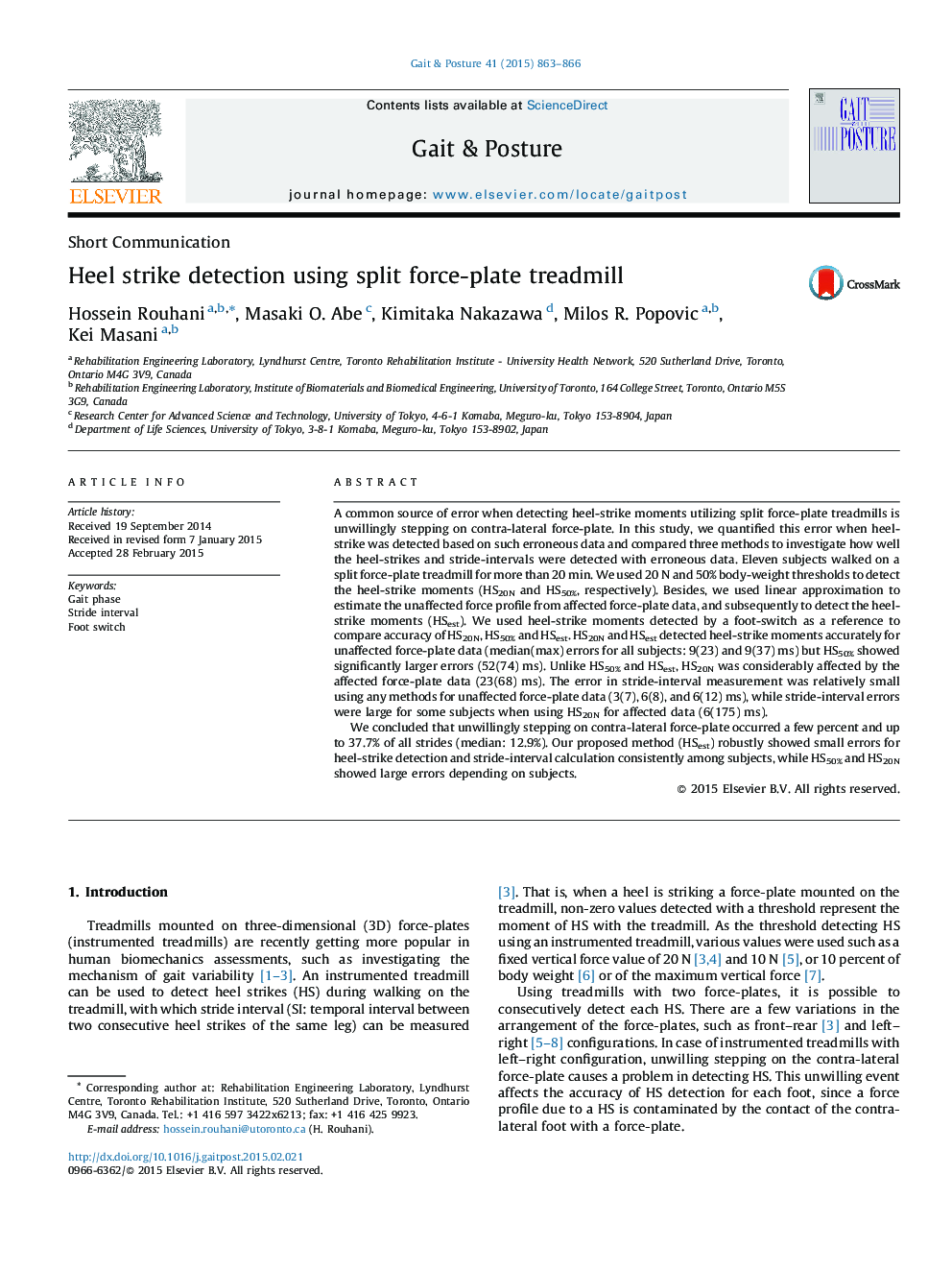| کد مقاله | کد نشریه | سال انتشار | مقاله انگلیسی | نسخه تمام متن |
|---|---|---|---|---|
| 6206272 | 1265642 | 2015 | 4 صفحه PDF | دانلود رایگان |
• Split force-plate treadmills are utilized in investigating the mechanisms of gait variability.
• Unwillingly stepping on contra-lateral force-plate can induce errors in heel-strike detection.
• We quantified this error when heel-strike was detected based on different force thresholds.
• We proposed a method to compensate these errors and to accurately detect heelstrike moments.
• Our method used linear approximation to estimate the unaffected force profile from affected data.
A common source of error when detecting heel-strike moments utilizing split force-plate treadmills is unwillingly stepping on contra-lateral force-plate. In this study, we quantified this error when heel-strike was detected based on such erroneous data and compared three methods to investigate how well the heel-strikes and stride-intervals were detected with erroneous data. Eleven subjects walked on a split force-plate treadmill for more than 20 min. We used 20 N and 50% body-weight thresholds to detect the heel-strike moments (HS20N and HS50%, respectively). Besides, we used linear approximation to estimate the unaffected force profile from affected force-plate data, and subsequently to detect the heel-strike moments (HSest). We used heel-strike moments detected by a foot-switch as a reference to compare accuracy of HS20N, HS50% and HSest. HS20N and HSest detected heel-strike moments accurately for unaffected force-plate data (median(max) errors for all subjects: 9(23) and 9(37) ms) but HS50% showed significantly larger errors (52(74) ms). Unlike HS50% and HSest, HS20N was considerably affected by the affected force-plate data (23(68) ms). The error in stride-interval measurement was relatively small using any methods for unaffected force-plate data (3(7), 6(8), and 6(12) ms), while stride-interval errors were large for some subjects when using HS20N for affected data (6(175) ms).We concluded that unwillingly stepping on contra-lateral force-plate occurred a few percent and up to 37.7% of all strides (median: 12.9%). Our proposed method (HSest) robustly showed small errors for heel-strike detection and stride-interval calculation consistently among subjects, while HS50% and HS20N showed large errors depending on subjects.
Journal: Gait & Posture - Volume 41, Issue 3, March 2015, Pages 863–866
